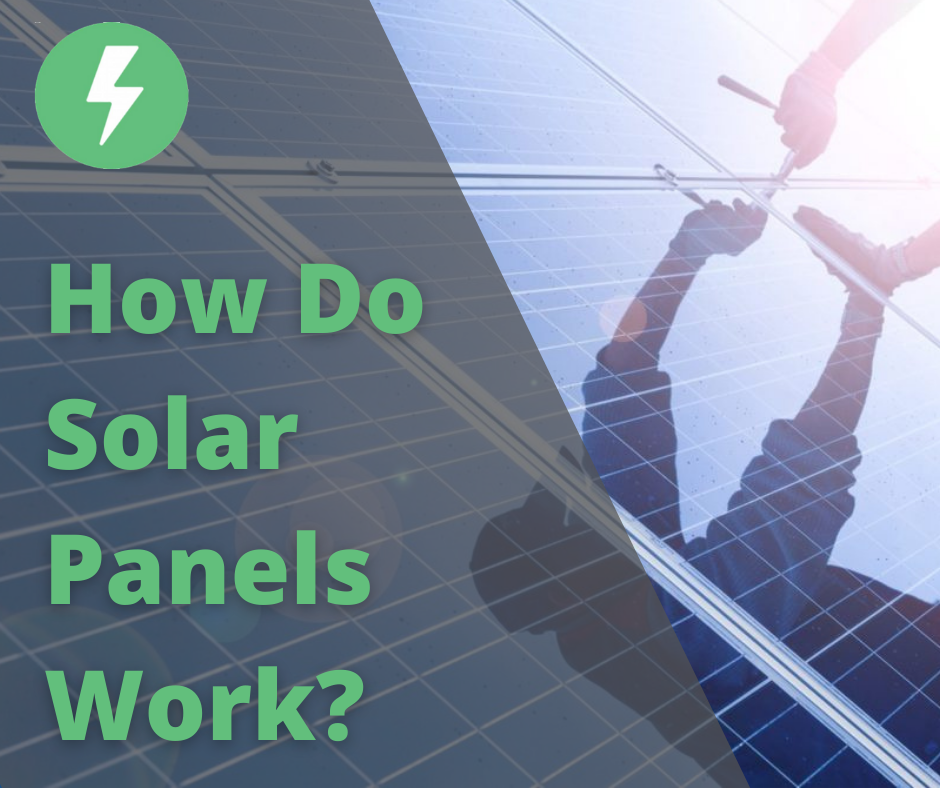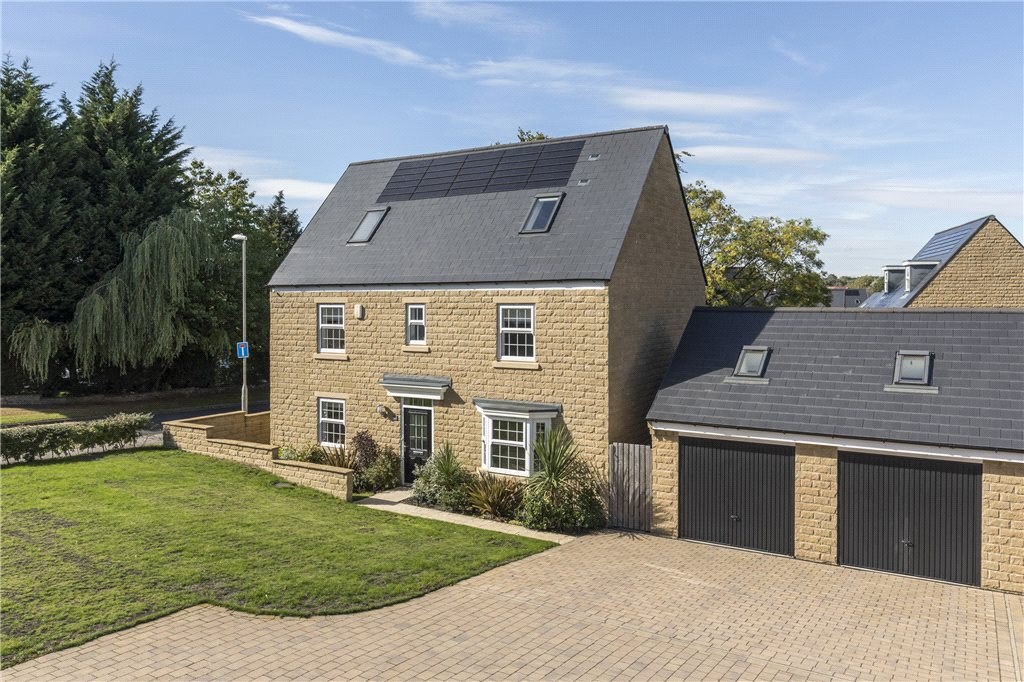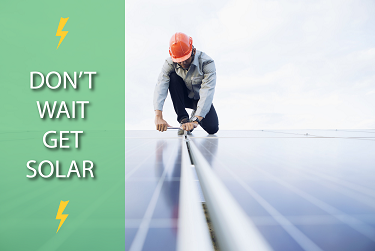
Solar panels have been around for many years now. They were one of the first renewable energy ideas that made it to the domestic market.
Nowadays, you’ll find many houses with solar panels on their roofs, and a lot of new-build are being made with them as well. But the real question is, how do solar panels work?
Everyone knows the basic concept of solar panels; they take energy from the sun and transfer this into usable energy for your home. No fossil fuels are burned, which means you get clean, green, energy.
But, what about the actual science behind this process? How do solar panels take solar energy and transform it into something useful?
Well, this guide will explain everything to you.
THE SOLAR PANEL PROCESS
The process begins with sunlight. Even when it’s cloudy, the sun still generates light that your solar panels can consume.
Sunlight is known as photons – which are just particles of light – and they get absorbed into the solar panel.
Every panel is made up of lots of different photovoltaic cells. You’ve probably heard that term before, and it pretty much just means the cells are made to convert photons into electricity.
Numerous cells are linked together, which creates one panel. Then, each solar system has various panels connected as well.
If you go up to a solar panel, you’ll see all the individual cells. Each one gets sandwiched between two layers of semi-conducting material.
Usually, the content of choice is silicone. For solar panels to work, these cells have to create an electric field.
The best way to understand an electric field is to think of a magnetic one.
Homeowners, Complete Our Easy Funding Checker to Find Out if You Qualify for Grants or Funding
Magnetic Fields
To create a magnetic field, you need opposite poles. The same goes for an electric one. The charges need to be split apart, so you have both positive and negative charges.
As a result, the silicon layers are typically injected or manufactured with different materials to alter the charge it has.
Thus, each photovoltaic cell is sandwiched between silicone with a negative charge and a positive one. Typically, the top layer gets a negative charge, and the bottom one is positive.
From here, an electric field is created between the layers of silicon.
This is where things get incredibly scientific. In essence, the whole function of solar panels is to let photons knock electrons free from atoms, which generates electricity.
With the electric field present, a photon of sunlight can knock an electron loose. From here, the electric field helps push the electron out of the silicon layer.
Then, these electrons get turned into electricity that you can use in your home.
How does this happen? Well, you call upon some other parts that make up the overall solar panel.
Each cell has conductive metal plates that act as a nice little bucket of sorts for the electrons.
Whenever a photon knocks one free from the silicon junction, it gets collected by the conductive plates. From here, they’re transferred into wires.
Now, we’ve essentially reached the end of the solar panel process. Once electrons are in wires, they function like any other type of electricity. They move through the wires and are funnelled into your home or back into the National Grid.
As a summary, here’s a breakdown of the main steps:
- Sunlight shines down on a solar panel
- The cells in the panel are sandwiched between negative & positive charged silicone layers
- These charges create an electric field
- Photos pass through the cell and use the electric field to knock out electrons from atoms
- Electrons pass through the silicone layers into a conductive metal panel
- The conductive panel collects electrons and moves them on to wires
- The wires now provide electricity to homes or the National Grid
Of course, the simplified explanation is that solar panels convert sunlight into electricity. But, this gives you a more thorough look at the process behind it.

HOW ARE SOLAR PANELS CONSTRUCTED?
To understand solar panels – how they work it’s always good to understand whats inside them.
A typical solar PV unit will be made out of solar cells, glass, EVA, backsheet, and a frame. Each panel is made up of numerous cells, as mentioned before.
These cells are all connected in a grid-like formation. Metal conductors are used to help fuse them. They’re made to help absorb sunlight, rather than reflect it.
With the silicone layers, you get phosphorous added to give the negative charge. For the positive charge, boron is typically used alongside phosphorous.
Generally speaking, most residential roofs are equipped with solar panels consisting of 60 cells. But, you do get ones that include up to 72 cells for larger roofs.
When all the cells are fused using metal connectors, a thin layer of glass is applied. This fits on the front, while a polymer-based material is attached to the back.
The material on the back is there to stop anything from entering the solar panels from behind – like moisture or dirt.
Then, a junction box is added to house all the electrical components of the solar PV system. This is where all the wires as mentioned earlier are stored to transfer the electricity from the panels.
Effectively, the junction box is just there for protection. Lastly, a frame is added around the panels for extra protection, and this also allows mounting clamps to attach it to a roof.
WHAT ARE THE BENEFITS OF SOLAR PANELS?
Now that you know how solar panels work, it’s essential to see the benefits they provide.
When you get these installed, you will be treated to the following advantages:
- Renewable energy: Clearly, the significant benefit is that you get renewable energy for your home. Solar panels use light to create electricity. No fossil fuels get used up, and you don’t need to call upon the National Grid. As a result, you’re producing cleaner energy that lowers your carbon footprint. If you want to be more eco-friendly, then solar panels are an excellent alternative energy source to consider.
- Lower your monthly electricity bill: Of course, a side effect of tapping into a natural energy source is that you don’t have to pay for it. When you power your home using solar energy, you’re getting free electricity. It most likely won’t be enough to provide for your home ultimately, but even supplementing some will lower your monthly electricity bills.
- Store electricity in a generator: You can also use solar panels to divert electricity to a generator outside your home. As such, if there’s ever a power outage, then you have some electricity ready to use.
- Low maintenance & easy to install: While the construction of solar panels is complicated, they’re easy to install. Find a professional contractor that’s qualified to do this, and you can mount them on your roof with ease. The beauty of the panels is that you can add to them if you want. Start with a small system, then add another panel or two in the future. Also, there’s no maintenance required on your part. Just clean them once or twice a year to keep them in good condition, and that’s it.
Concerns
There are a couple of things that concern people about solar panels. Firstly, the costs. Yes, installation costs aren’t cheap. But, you have to appreciate what you’re paying for.
This is a technologically advanced system that converts energy from the sun. So, you’re paying for something unique. Not only that, but you also need to think about it from an investment standpoint.
It costs a lot now, but think about the savings you’ll generate thanks to it. Plus, you can even earn money from the solar energy you don’t use – which we’ll explain when talking about grid trade in a moment.
With all things considered, the cost of installation isn’t that bad at all – and you can find funding options as well.
The other issue is that most people think solar PV systems are dependent on the weather. For example, if you don’t see much sunlight, then they won’t work.
As we already touched upon, sunlight still gets absorbed through the clouds. So, the weather isn’t as big of an issue as some people make it out to be.
The only time your solar PV system won’t work that efficiently is when it’s dark.

WHAT IS THE GRID TRADE SCHEME?
The grid trade scheme, or grid trading incentive, is a massive reason to buy solar panels. Back in 2010, the government released a programme that let homeowners sell their unused solar energy to the National Grid.
However, under this scheme, the payments you get are capped at 50% of your electrical output. In essence, you can’t sell back more than 50% of what you generate.
Now, the grid trading incentive has altered things slightly. Before, there was a set price for the payments. Now, they’re preferential and are set by the companies buying solar energy.
As a result, you have more choice when looking for a grid trade deal that appeals to you. You can export your unused energy to the National Grid, and get paid for doing so.
The grid trade scheme has also focused on using power more efficiently as well.
So, this is another reason to consider investing in solar panels strongly. As we said earlier, the cost of the installation starts to look a lot better when you think about the money you save/earn.
With the grid trading incentive, you can generate some extra cash that helps pay back the installation costs and provide an excellent return on your investment.
If you’re interested in learning more about grid trading, then we have a more detailed guide available on our site. Give it a read as it explains everything in more depth.
SUMMARY – HOW DO SOLAR PANELS WORK?
We’ve covered an awful lot of information on solar panels, how they work, and their benefits. In review, solar PV systems are made out of lots of different components.
The critical element is the photovoltaic cells that make up each solar panel. These cells are made sandwiched between layers of electrically charged silicone, creating an electric field.
From here, solar panels absorb photons, which knock electrons free, conducting them into electricity. The electricity from your solar panels is taken through wires to your home, the National Grid, or a generator.
That’s how these systems work, and you get lots of benefits from them. Solar panels help you save money on electricity, reduce your carbon footprint, and earn money through the grid trade scheme.
If you’re interested in getting solar panels for your home, then feel free to contact us today. We can provide you with the best solar panel quotes, along with details of qualified installers – and any grants/funding schemes available for you.

